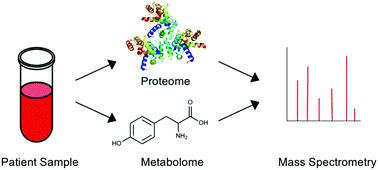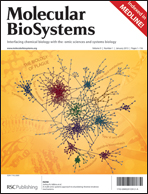质谱法用于发现败血症的生物标志物
IF 3.743
Q2 Biochemistry, Genetics and Molecular Biology
引用次数: 70
摘要
脓毒症是一种严重的疾病,重症监护病房(icu) 30%的患者发生脓毒症。早期发现败血症是防止其发展为严重败血症和感染性休克的关键,这可能导致器官衰竭和死亡。脓毒症的诊断标准是非特异性的,阻碍了患者的及时诊断。因此,目前有很大的努力来检测生物标志物,可以帮助医生在败血症的诊断和预后。质谱法是检测脓毒症进展过程中代谢组学和蛋白质组学变化的常用方法。这些“组学”策略允许从脓毒症患者获得的人类生物样本中对数千种代谢物和蛋白质进行非靶向分析。这些代谢物和蛋白质的差异表达或修饰可以为败血症的诊断提供更可靠的生物标志物来源。在这里,我们将重点关注败血症生物标志物的当前知识,并讨论用于其检测的各种质谱技术。我们考虑了代谢组和蛋白质组的研究,并总结了关于一般和新生儿败血症的潜在生物标志物的信息。本文章由计算机程序翻译,如有差异,请以英文原文为准。

Mass spectrometry for the discovery of biomarkers of sepsis
Sepsis is a serious medical condition that occurs in 30% of patients in intensive care units (ICUs). Early detection of sepsis is key to prevent its progression to severe sepsis and septic shock, which can cause organ failure and death. Diagnostic criteria for sepsis are nonspecific and hinder a timely diagnosis in patients. Therefore, there is currently a large effort to detect biomarkers that can aid physicians in the diagnosis and prognosis of sepsis. Mass spectrometry is often the method of choice to detect metabolomic and proteomic changes that occur during sepsis progression. These "omics" strategies allow for untargeted profiling of thousands of metabolites and proteins from human biological samples obtained from septic patients. Differential expression of or modifications to these metabolites and proteins can provide a more reliable source of diagnostic biomarkers for sepsis. Here, we focus on the current knowledge of biomarkers of sepsis and discuss the various mass spectrometric technologies used in their detection. We consider studies of the metabolome and proteome and summarize information regarding potential biomarkers in both general and neonatal sepsis.
求助全文
通过发布文献求助,成功后即可免费获取论文全文。
去求助
来源期刊

Molecular BioSystems
生物-生化与分子生物学
CiteScore
2.94
自引率
0.00%
发文量
0
审稿时长
2.6 months
期刊介绍:
Molecular Omics publishes molecular level experimental and bioinformatics research in the -omics sciences, including genomics, proteomics, transcriptomics and metabolomics. We will also welcome multidisciplinary papers presenting studies combining different types of omics, or the interface of omics and other fields such as systems biology or chemical biology.
 求助内容:
求助内容: 应助结果提醒方式:
应助结果提醒方式:


